STORIES FROM THE PLATTELAND
Flocking to a sheep museum in the Karoo
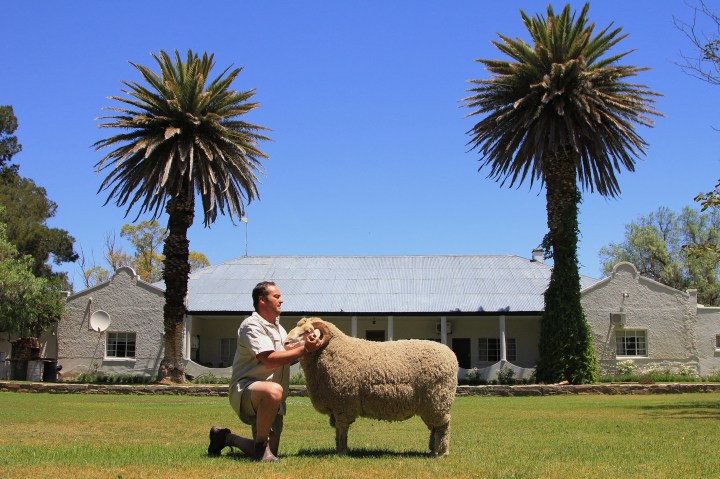
A Fish River farm museum tells the story of a legendary Eastern Cape family and its fine Merino wool.
The Van Aardt Family and Fine Wool Museum on Mulberry Grove Farm north of Cradock is set in an old shearing shed still faintly scented with a comforting lanolin whiff of sheep’s wool.
Half of the airy museum is devoted to the art of farming Fine Wool Merino sheep. The other half is full of fascinating family artefacts, carefully assembled and curated by retired farmer Willem van Aardt, a man blessed with a long line of very interesting ancestors.
It is the packrats, pickers and collectors of the world who assemble and contextualise the objects that give history its truth and dimensional heft. And Willem van Aardt is one.
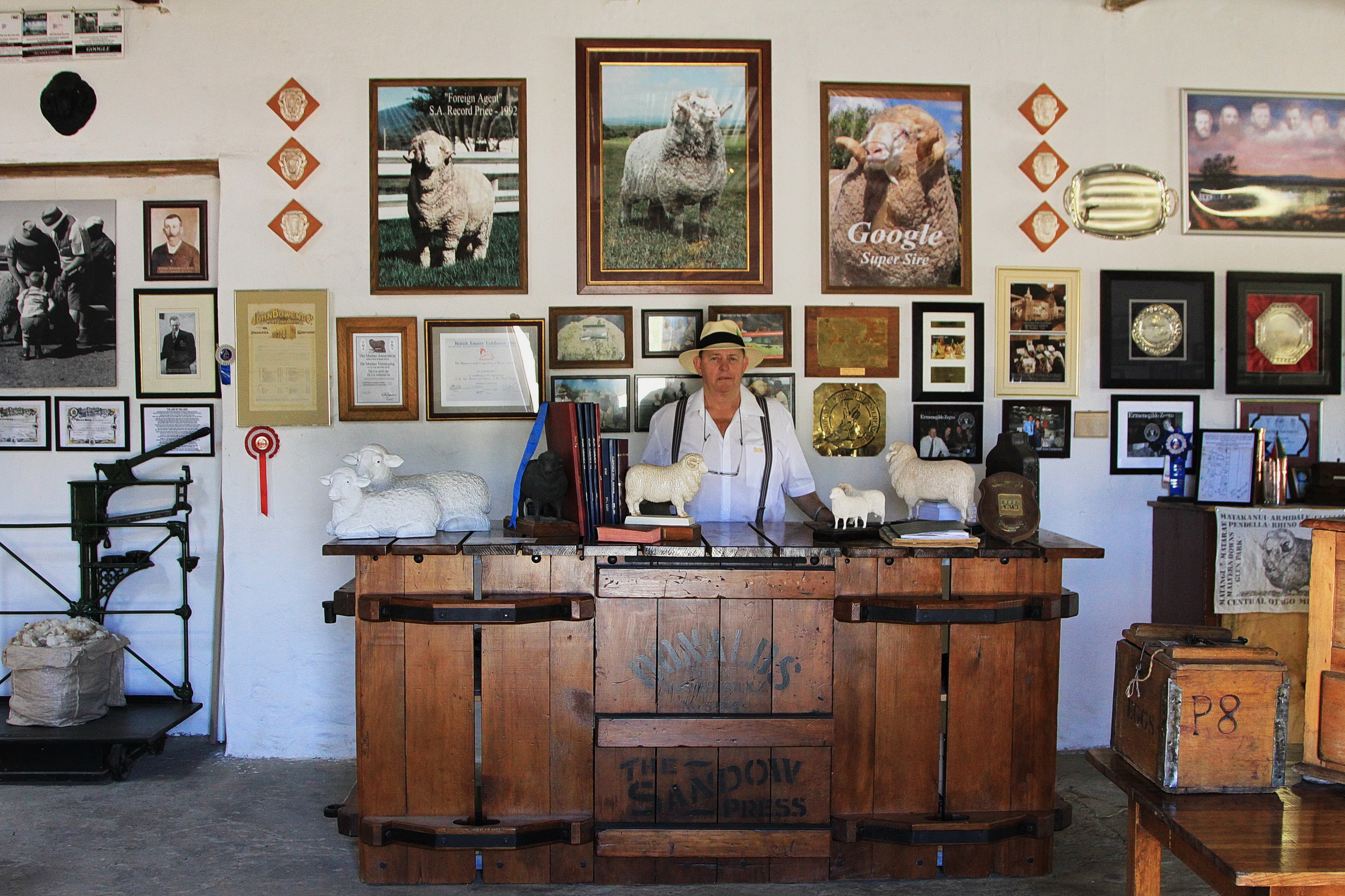
Willem van Aardt, retired farmer and lifelong packrat, turned an old Donald’s wool-press into a counter. Surrounding him are artefacts of Van Aardt and sheep-farming history. (Photo: Chris Marais)
Traces of history
“I collect anything,” he shrugs, as we stand before a long line of eccentrically branded old tobacco pouches, the kinds once favoured by shearers and farmers alike.
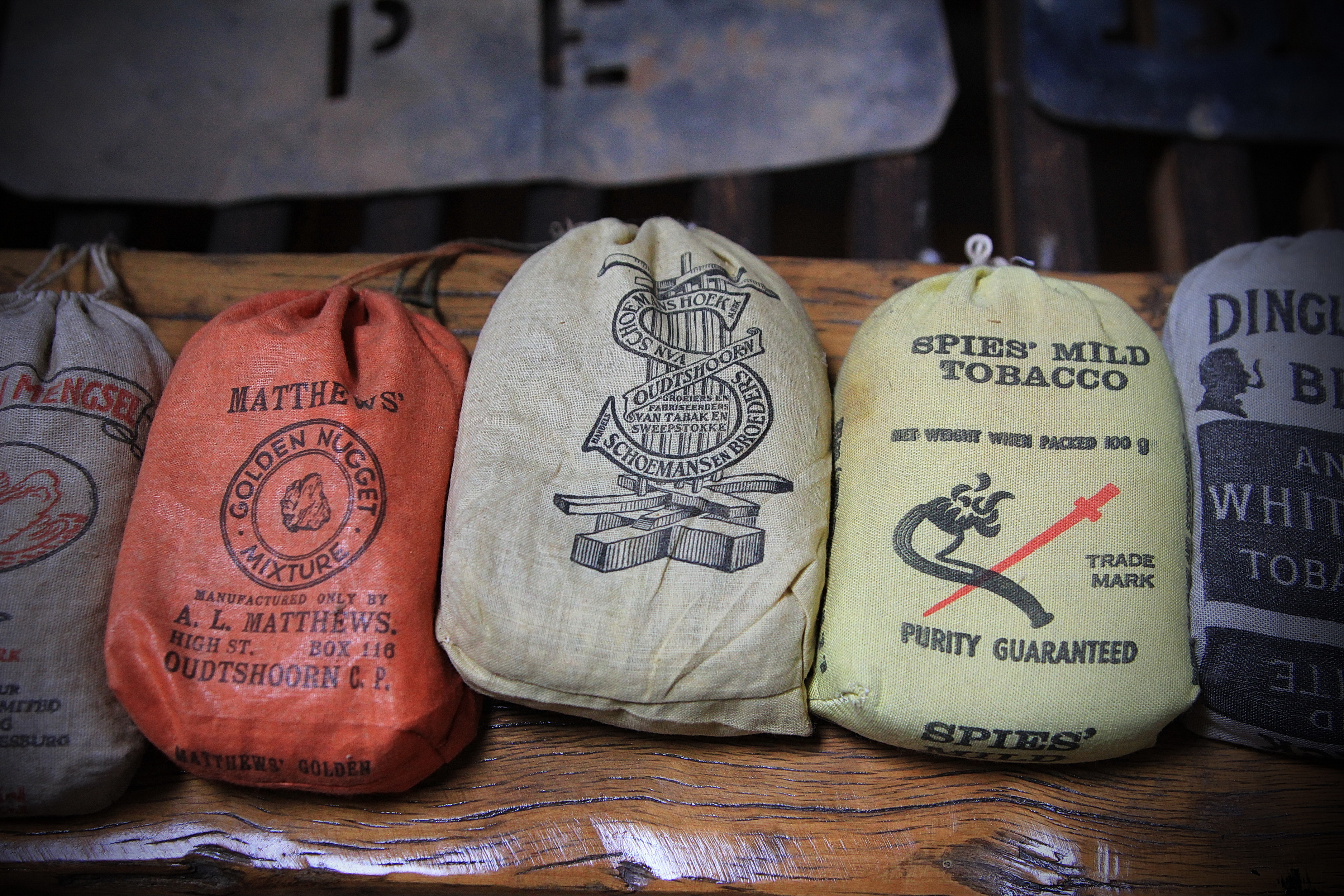
‘I collect anything,’ says Willem. An array of his tobacco pouches are on display in the museum. (Photo: Chris Marais)
For 219 years, from 1797 to 2016, the Van Aardts farmed at Roodewal near Cookhouse. The family’s history is part of the warp and weft of the Eastern Cape, and Willem could throw away none of it.
He kept all the old photographs of his family, the wooden carts used a century ago, his father’s World War 1 medals, wool presses of various vintages and provenance, shears, dosing spoons, every cutting on his family’s Merino fine wool stud, Fairworld, the old cream separators and butter churns that belonged to his grandfather, the whittled wooden cigarette boxes made by his father’s Italian prisoner of war friends, ancient gunpowder dispensers, a transistor radio that once brought the world to Roodewal, the musical compositions of Madelein van Aardt, one of the very first microwave ovens ever made, venerable christening dresses and pictures of two beloved carthorses called Melck and Monarch.
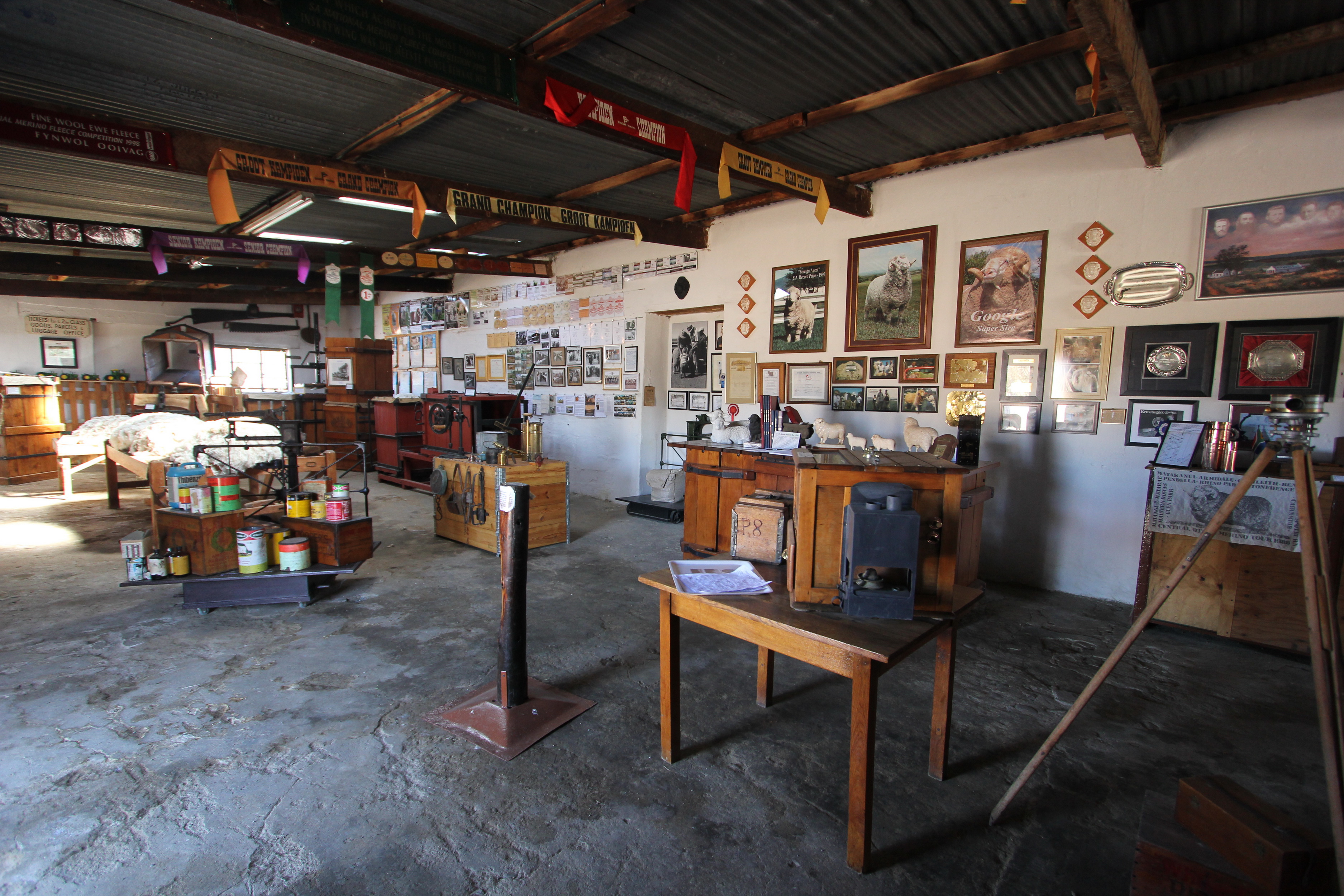
Everything here has a story. Including the rubbing post in the middle that dozens of rams have used to scratch their itches. (Photo: Chris Marais)
Every little object has a story
When Willem retired from farming in 2012 and handed over the now famous Fairworld Fine Wool Merino stud to his son Acton, he set about assembling some of the artefacts mouldering away in old sheds, outhouses and storerooms into some kind of order. In 2013, to celebrate 100 years of Merino farming, they were displayed in the newly created Fairworld Museum on Roodewal.
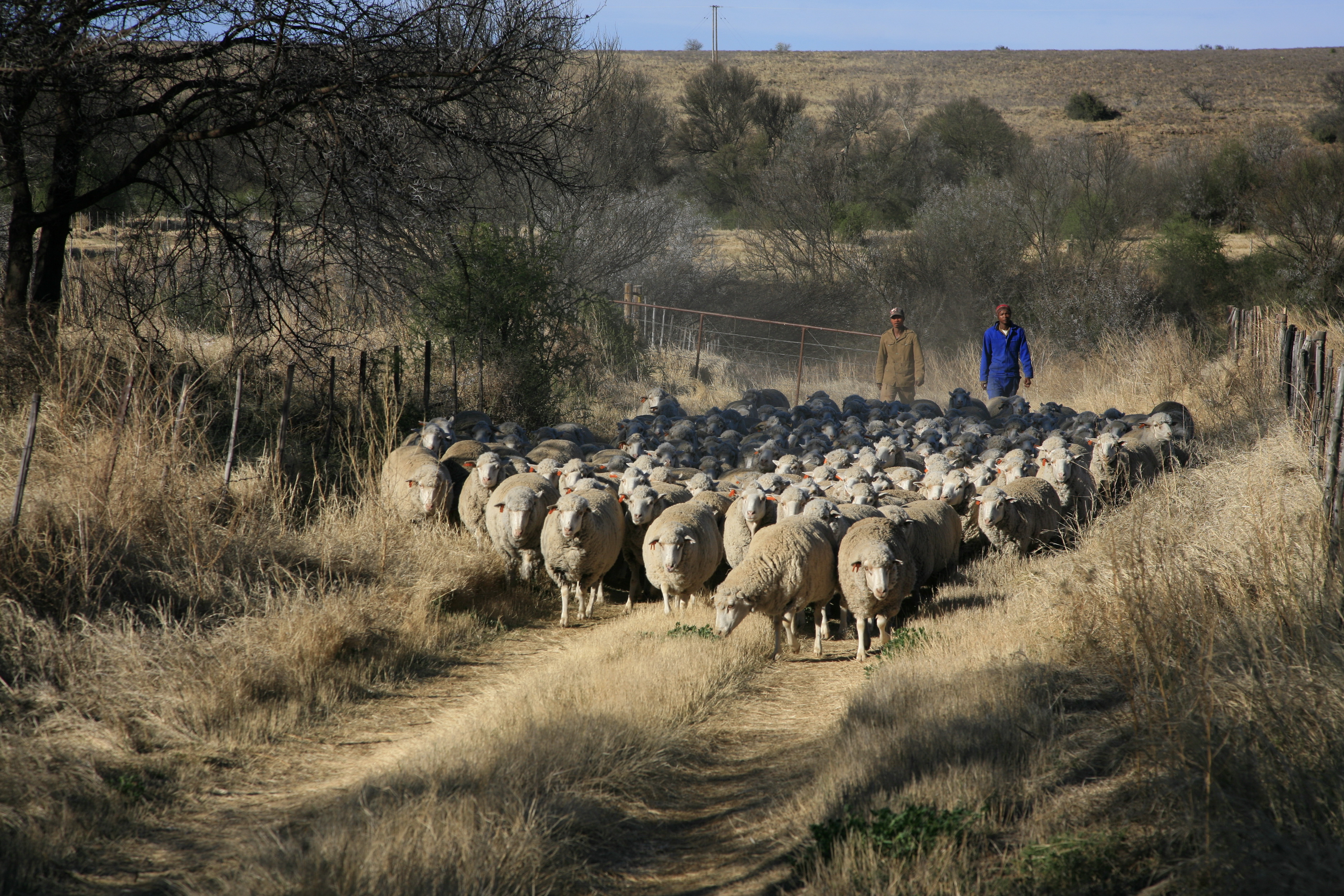
The Eastern Cape Karoo is sheep country. (Photo: Chris Marais)
Only three years after that, the Van Aardts closed the long chapter of their own history on this land.
It was no easy feat moving all the animals plus the contents of the farmstead and museum to the Van Aardts’ new home, Mulberry Grove.
“It took 49 trips with big trucks, including Interlinks, to move everything. On the plus side, now there was more room for the museum,” says Willem.
Every little object there has a story. For example, in a cabinet is the pair of spiffy suede boots (with socks) bought by Willem’s grandfather Carolus Johannes van Aardt (1854–1934). He squandered half his paycheck on them when he became a transport rider up on Kimberley’s diamond fields as a callow 14-year-old.
“My great-grandfather apparently whipped him for the ridiculous waste of it all when he returned home. They were completely impractical for farming work.”
Banished as an undesirable
Carolus Johannes was a Van Aardt who saw more history than most. He was the one who took over the horse farm his father Bartholomeus had started, and who saw all his horses taken by the British forces at the outbreak of the Anglo-Boer War. He was left with only one – a young untried mare called Vlieg. She fled the British horse agents and cantered home to Roodewal.
Willem not only created a museum but also wrote a book on the Van Aardt family history. In it, he records how, during the Anglo-Boer War, Carolus, his brother, and neighbours had to walk with wheelbarrows every month to Bedford (a round trip of 44km) to collect their flour, sugar and coffee with coupons issued by the British town guards.
Willem writes: “When the farmers arrived [on 7 May 1901], a quarrel started and the two sides came to blows when the town guards refused to stamp the farmers’ coupons because they had expired. As a result of the skirmish, Carolus Johannes was arrested and sent to the Port Alfred Internment Camp as an ‘undesirable’ until the end of the Anglo-Boer War.”
When Carolus returned to Roodewal, there was not much left to farm with.
Butter kegs save the day
But the Van Aardts were undaunted. They acquired a few milk cows and began to make butter in ever-greater amounts, eventually driving through a cartful of butter kegs to Cookhouse every few days, a total of 1,500kg of butter a year, on average.
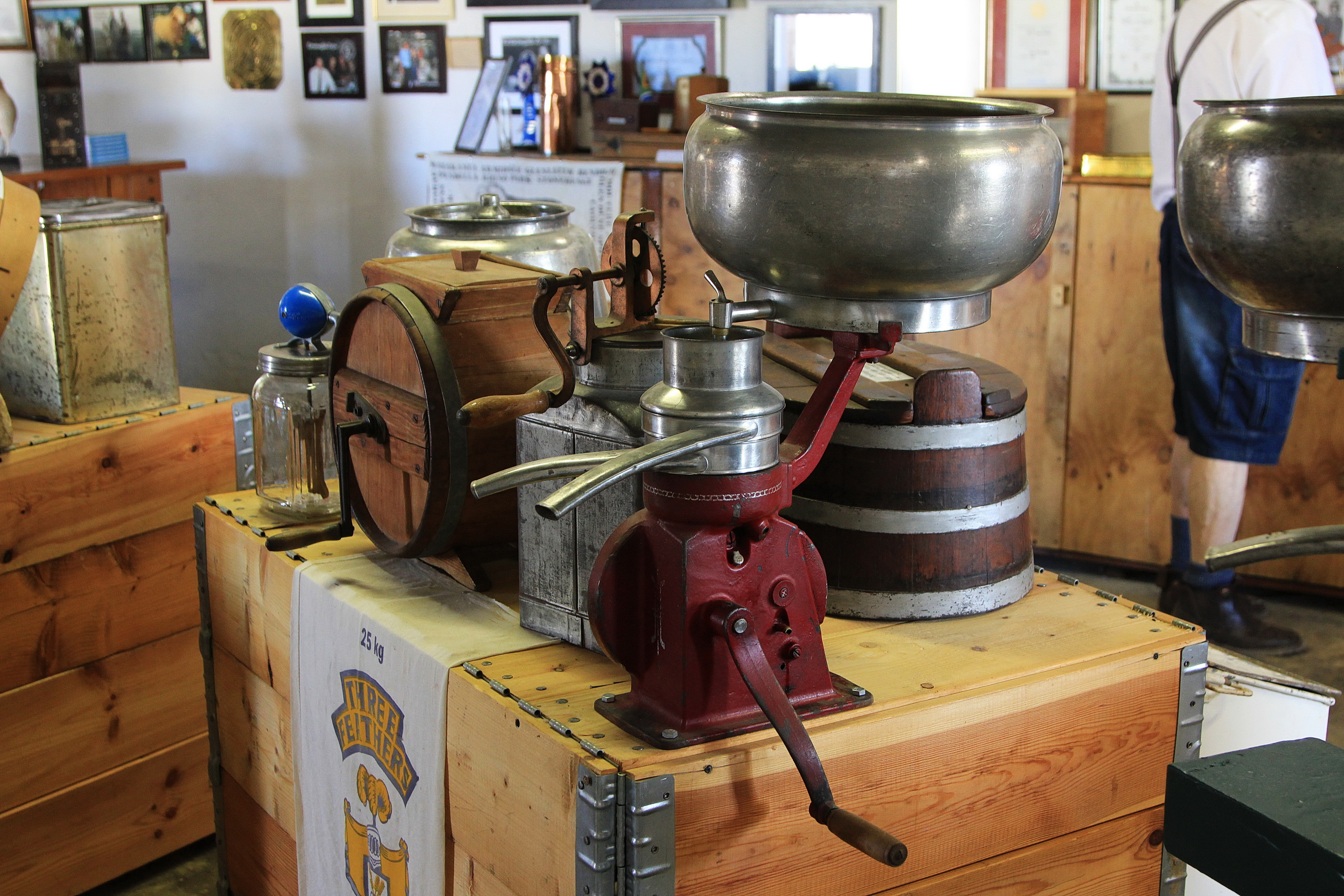
The Fairworld Museum contains these old cream separators that were used to make butter over a century ago. (Photo: Chris Marais)
Of course, the original cream separators, butter churns, kegs, urns and moulds are in the museum, as is the famous old Van Aardt botterkar (butter cart). How they kept the butter from melting remains a mystery.
By 1913 Willem’s grandfather Carolus started buying up Merino sheep of the Bundemar bloodline. So began the Fairworld stud.
A century of Merino sheep farming
In setting up the family museum, Willem has also effectively curated a century of Merino sheep farming history. Here you can see all the tools of the wool trade. There are hand shears, the wool-classing table polished with lanolin, wool scales, wool presses and the strange devices used by farmers to open sheep’s mouths and pour in medication using brass dosing spoons.
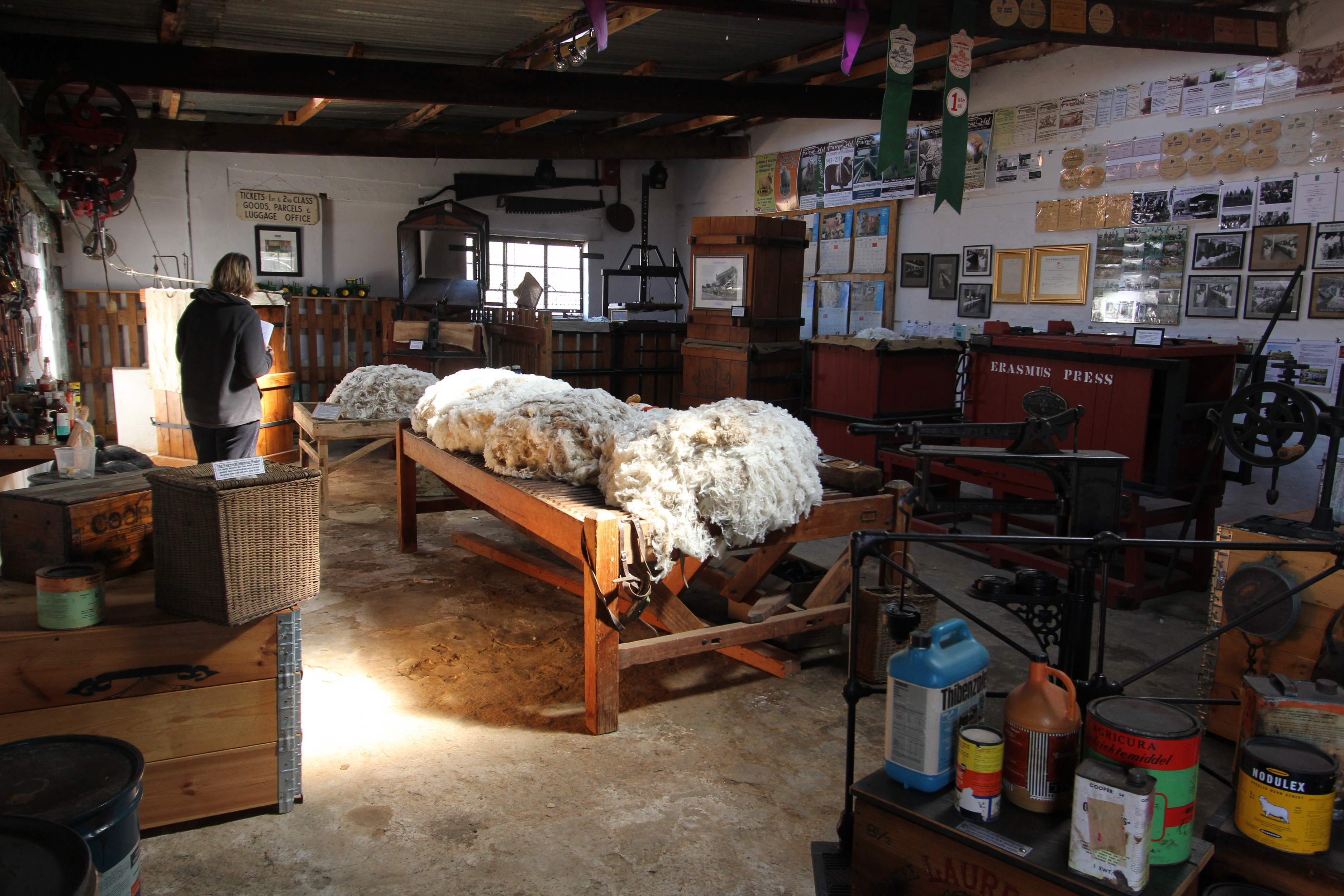
Thanks to the wool clips, the shed retains its characteristic scent of lanolin. (Photo: Chris Marais)
There are samples of the sumptuous ultra-fine wool that has made the Fairworld stud famous; the lootjies (tokens) that the shearers use to keep track of how many sheep they have shorn in a day; even the crisp white dust coats that the wool classers used to wear.
The centrepiece of the museum is a beautiful old wooden Donalds wool press that Willem fashioned into a counter – the perfect height for a bar. It’s the first thing you see, apart from the rubbing post that countless Fairworld rams have worn down to smoothness while scratching itches.
Google, the ram
There are also photographs of Fairworld’s most influential rams. Three are famous among Merino farmers all over the world – Foreign Agent, Barrier and Google. Other significant Fairworld rams also have rather singular names: WhatsApp, Wi-Fi, Koos, World Cup, Kokstad, Staples, Picasso and Dikkop.
Among the more puzzling agricultural relics in the museum are two magnetic cylindrical objects with uneven rusted metal centres.
“These were used to collect any bits of wire or metal swallowed by cows,” says Willem laconically. “Once they swallowed the magnet, it would just sit there in one of the cow’s four stomachs, attracting the metal that might have perforated the guts.”
“How do you get it back?” I ask, transfixed. “Cut the cow open when it dies,” answers Willem, with a touch of agricultural nonchalance.
The whole collection is priceless, capturing frontier lifestyle history better than a regular museum. Set aside a good few hours for a trip down Merino Memory Lane. DM
Apart from the Van Aardt Family & Fine Wool Museum (which has its own Facebook page), Mulberry Grove also has farm-stay accommodation. Willem’s daughter-in-law Elize van Aardt, an accomplished ceramicist, offers pottery workshops and fun events in her farm studio. Email [email protected] or [email protected]. Alternatively, WhatsApp 082 855 5563.
For an insider’s view on life in the Karoo, get the three-book special of Karoo Roads I, Karoo Roads II and Karoo Roads III (all illustrated in black and white) by Julienne du Toit and Chris Marais for only R800, including courier costs in South Africa. For more details, contact Julie at [email protected]


















Comments - Please login in order to comment.